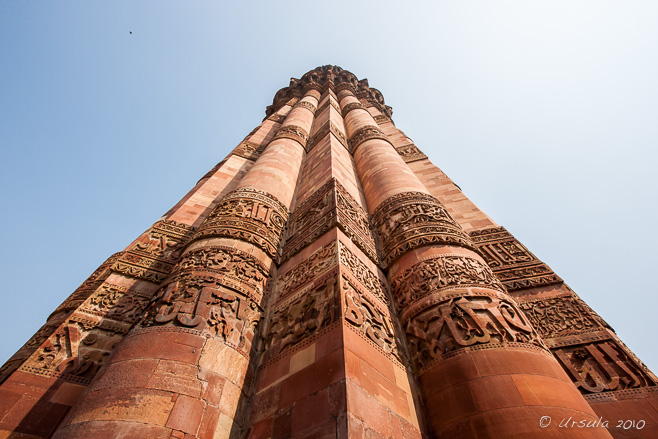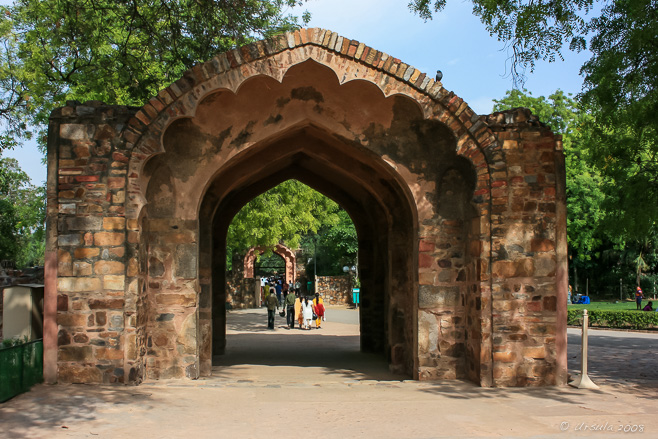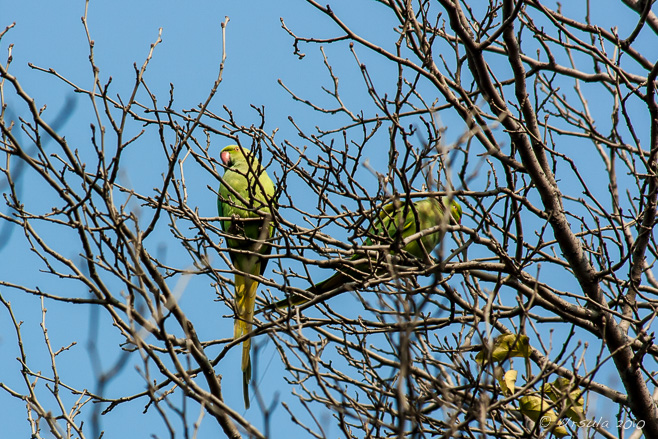
Qutb Minar
Look up! India’s 2nd tallest minaret rises 73 metres into the air. (24January2010)
It is pretty impressive: the world’s tallest brick minaret, set in a complex of archaeological ruins dating back to 1193 AD, on a site that is much older than that. The stories behind it are quite something as well.
Qutb Minar, sometimes spelled Qutub or Qutab, was started in 1192 by Qutb-ud-din Aibak, the first Sultan of Delhi and ruler of North India from 1206 to 1210 AD.
Some say Qutb Minar was intended as a minaret for the muezzins to call the faithful to prayer. Others, however, argue that it is a Victory Tower: commemorating the conquest of Mohammed Ghori (Muhammad Ghari) over the Rajputs and celebrating the beginning of Muslim rule in India.
Qutb-ud-din Aibak, the man responsible for having the Qutb Minar built, was born to a Turkish family in Central Asia. Sold as a slave in his childhood, he was lucky that his owners were powerful mentors: the first was a Qazi, a sharia judge, and the next was a Sultan – ruling over Afghanistan, Pakistan, and northern India.
Educated by his first owner, Qutb-ud-din Aibak became a fanatical Muslim. In 1192, under the command of his later owner Mohammed Ghori, Qutb’s garrison occupied Delhi. The young military commander ordered the destruction of twenty-seven Hindu and Jain temples to supply building materials for the construction of Quwwat-ul-Islam (“Might and Glory of Islam”), Delhi’s first mosque. He also started work on the red sandstone and marble tower.
Qutb crowned himself Sultan of the Mamlūk Dynasty after Mohammed Ghori’s assasination in 1206. Unfortunately, he only ruled four years – dying after impaling himself on the pommel of his own saddle while playing polo. The completion of the giant minaret was left to his successors, who added stories, renovated and repaired damage.
Although the magnificent tower is dedicated to a famous Sufi saint, Qutbuddin Bakhtiar Kaki, it is commonly believed that the name, Qutb Minar, is in honour of Sultan Qutb-ud-din Aibak who had it built.
In 1993 the whole archaeological site around the minar, including funerary buildings and the remains of two mosques, were declared a UNESCO World Heritage Site.

Entrance/Exit
A beautiful arched gateway gives an indication of the delicate sandstone carving that is found within the complex. (12April2008)

Rose Ringed Parakeets
The Mughal Garden and Mughal Mosque are next to the entrance. (24January2010)

Five-Striped Palm Squirrel
Once inside the walled Mughal Garden, it is like being in a lost, wild world. (24January2010)

Path to Qutb Minar and Alai Darwaza (2008April12)

Qutb Minar
(24January2010)

Alai Darwaza
The beautiful domed Alai gate into the mosque complex was erected in 1311 by Alauddin Khalji. The red sandstone structure is decorated with stunning Turkic features made of white marble inlay. (12April2008)

Calligraphy Detail
The red sandstone of the Qutb is richly inscribed with Arabic calligraphy. (24January2010)

Young Couple
Surfaces everywhere are ornately decorated. (04November 2013)

Great Arch
Ruined arches surround the old walls of the Quwwat ul-Islam Mosque. (12April2008)

Carved Colonades
Worn columns around the Quwwat ul-Islam Mosque include Hindu motifs, remnants from the temples they were pillaged from. (04November2013)

Alai Minar
Sultan Alauddin Khilji, who expanded the Quwwat ul-Islam Mosque, started a second minar, intended to be twice the size of Qutb Minar. He died, however, before the structure rose above the first story. All that remains is a giant rubble masonry core. (24January2010)

Brick Layer
The Qutb Minar complex requires a fair bit of maintenance. (07April2010)

Brick Layer’s Apprentice
On one of our visits, extensive renovations were taking place. (07April2010)

Brick Layer
He needs to work fast – the searing heat dries the mortar quickly. (07April2010)

Female Labourer
The ring on her head helps her balance the slabs of rocks she must carry. (07April2010)

“Bring your Children to Work”
Labourers don’t have access to childcare: children look after each other, while their mums work nearby.
(07April2010)

Who could resist that solemn gaze?
(07April2010)

Sandstone Detail
The housing around Iltutmish’s Tomb is finely carved. (07April2010)

Iltutmish’s Tomb
The beautifully carved white marble cenotaph of Iltutmish, the second “Slave Dynasty” Sultan of Delhi (r. 1211–1236 AD) is an important feature within the Qutb complex. (04November 2013)

Photographer in Situ
On one of my visits, an Indian woman was sitting outside Iltutmish’s Tomb taking visitors’ pictures with their own cameras. (24January2010)

Indian Woman
She was equally happy to have her picture taken – for a tip! (24January2010)

At the Back of the Ruins
(04November 2013)

Qutb from the Back
Doorways and arches … (24January2010)

Qutb from the Back
… make the complex fun to explore. (24January2010)

Security Guard
A guard finds a shady spot from which to watch the site… (24January2010)

The Girls
… while young women on a day out clamour to have their picture taken. (24January2010)

Young Couple
The Qutb Minar site is a popular destination for Delhi residents. This young couple was celebrating a birthday. They even offered me some of the cake they had brought with them! (07April2010)
Imagine: from lowly slave to Sultan and ruler over vast territory, leaving behind buildings still celebrated over 800 years later. Qutb-ud-din Aibak was the founder of a dynasty – albeit a short-lived one (1206 to 1290) – that ruled Delhi and northern India, Nepal, and part of Pakistan.
As hard as it might be to conceive of today, apparently this was not an uncommon practice in early Muslim societies. From the 9th century, Mamlūks (Arabic for “owned” or “property”) were soldiers of slave origin who had converted to Islam. By the 13th century, these Mamluks held political and military power across the region.

Even so, it is an impressive legacy he leaves behind: in stone – and in stories.
Until next time!
Pictures: 12April2008, 24January2010, 07April2010 and 04November 2013































.png)

